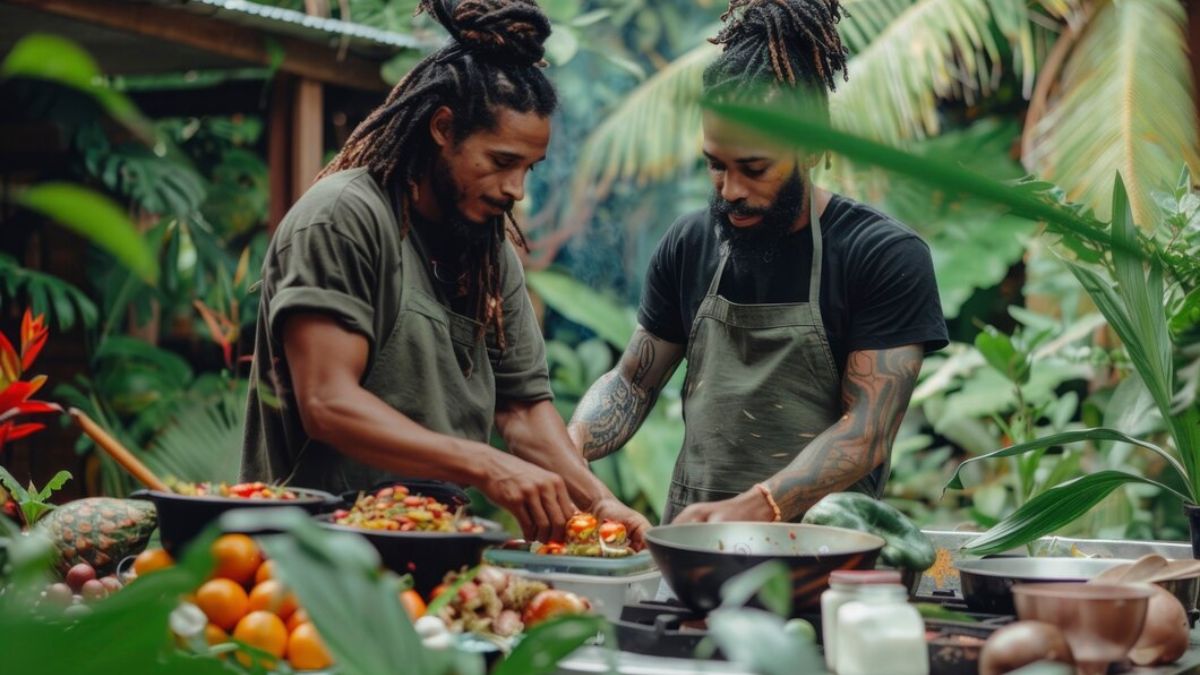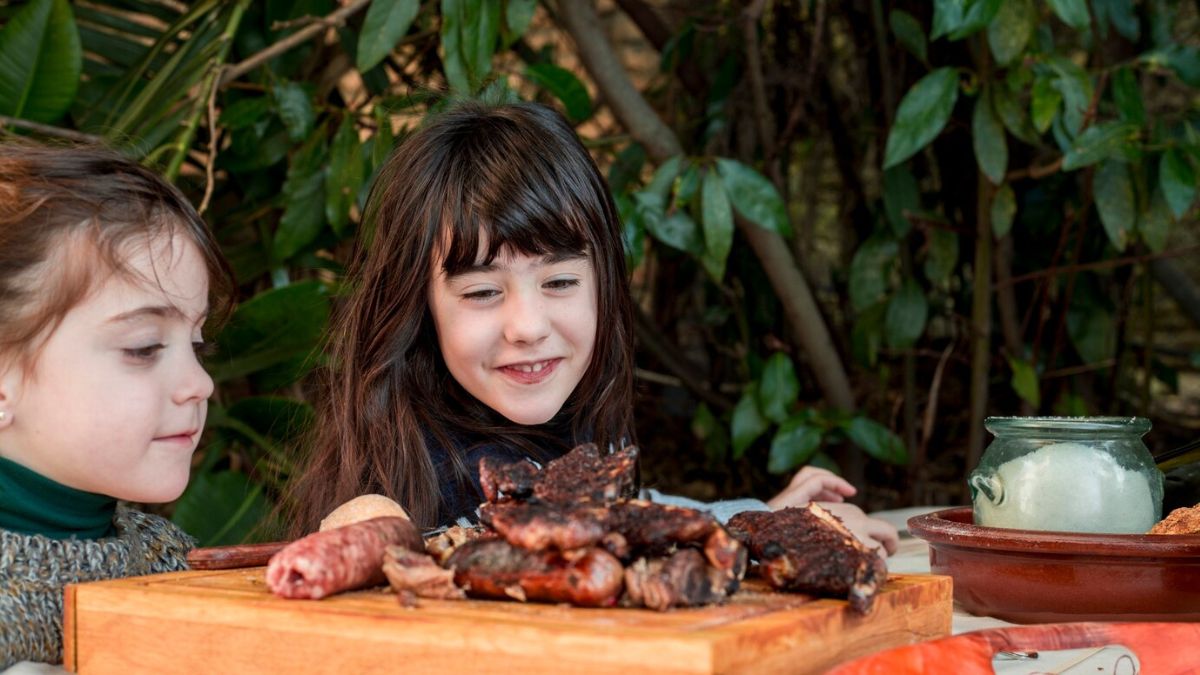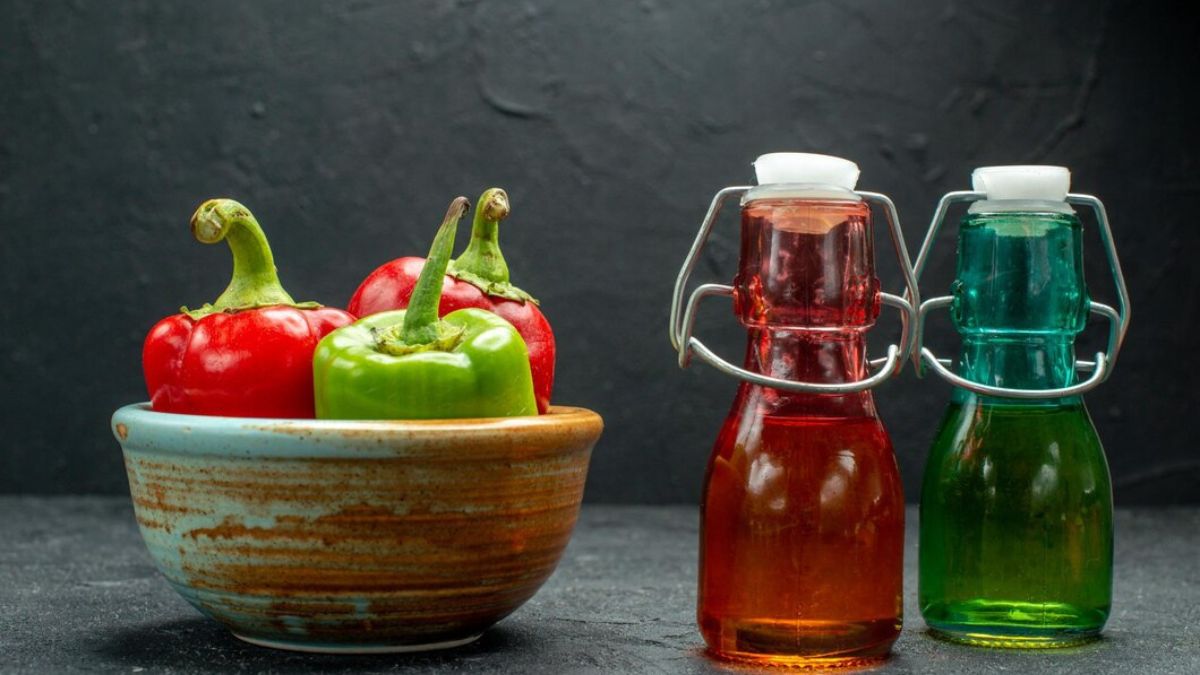FOOD
Authentic Caribbean Culinary Experiences for Adventurous Travelers

Introduction to Caribbean Cuisine
For those with an adventurous palate, the Caribbean offers a treasure trove of culinary delights as diverse as the islands. Each region boasts its flavorful specialties, influenced by a melting pot of cultures, including African, Indian, European, and Indigenous peoples. From the bustling streets to serene beaches, there is always good food in Cayman and beyond, waiting to be discovered by the curious traveler. A journey into the culinary heart of the Caribbean unveils diverse flavors and delves into the rich stories that have shaped these vibrant dishes.
Caribbean cuisine reflects a harmonious blend of cultural influences, each leaving an indelible imprint on the region’s vibrant palate. The excitement of tasting freshly prepared dishes in this tropical paradise is unparalleled, offering a sensory adventure for every foodie. From fiery spices to sweet, tropical fruits, the ingredients and cooking styles vary widely, but each dish tells a story of heritage and tradition. Dive in with us as we explore authentic Caribbean culinary experiences that will tantalize your taste buds.
Signature Dishes You Must Try
- Jerk Chicken: This dish is the epitome of Caribbean flavor, a fiery blend of spices and slow-cooked perfection. The technique involves marinating chicken in a spicy mixture and smoking it over a wood fire, which imparts a distinct savory and smoky taste that is beloved by both locals and visitors.
- Conch Fritters: Conch, a type of mollusk, is a staple in many Caribbean diets. These delicious fritters are deep-fried and seasoned to perfection, providing a taste of island life as refreshing as the ocean breeze.
- Ackee and Saltfish: Jamaica’s national dish is a delightful combination of fruit and fish, a must-try for the adventurous. Ackee, a soft and creamy fruit, is sautéed with saltfish, peppers, onions, and spices, resulting in a savory, comforting, exotic flavor profile.
- Callaloo: This leafy green stew is a staple in Caribbean households, reflecting the bounty of local ingredients. Made with greens akin to spinach, it can include meats or seafood and is often spiced with hot peppers, adding depth and heat to the dish.
Each dish showcases the rich tapestry of ingredients and cooking methods that define the Caribbean’s authentic culinary experiences. They are not just meals but a celebration of the island’s cultural diversity and culinary innovation.
The Impact of Local Ingredients
The Caribbean’s tropical climate is a boon for diverse and abundant produce. Ingredients like plantains, yams, coconuts, and fresh seafood are key components in many traditional dishes, lending authenticity and freshness. Local farmers and markets are vital to the culinary landscape, offering seasonal produce that changes with the tides and climate. The richness of local agriculture can be explored further through resources such as the Caribbean Agricultural Research & Development Institute, which delves into sustainable farming practices across the islands. By emphasizing locally sourced ingredients, the Caribbean cultivates a food culture that is both sustainable and delicious.
The Role of Festivals and Celebrations
Festivals in the Caribbean are more than just celebrations; they are feasts for the senses and play a pivotal role in showcasing the region’s rich culinary narrative. Events like Carnival are about music and dance and indulging in a vast array of local specialties. Festival foods often include spicy stews, roasted meats, and sweet coconut treats, all bringing communities together in joyous revelry. These celebrations highlight the Caribbean’s spirit and love for food, encouraging visitors to participate in the culinary party.
Street Food Adventures
One of the most thrilling ways to experience Caribbean culture is through its vibrant street food scene. Vendors sell an array of tasty delights, including patties, rotis, and churros, each offering a unique taste of the Caribbean. Street foods like grilled corn, spice-coated nuts, and fried plantains are staples you can enjoy while wandering through bustling market streets. Discovering these delicacies on the go unveils flavors hidden in busy marketplaces and provides an authentic culinary experience. For a broader perspective on how street food influences different regions, the Street Food Institute offers insights into the global impact of street cuisines. These bite-sized delights present a culinary adventure in every bite.
Influences from Around the World
Caribbean cuisine is a melting pot of global influences, harmonizing traditions from Africa, India, and Europe. Indian spices such as turmeric and cloves, African root vegetables like cassava, and European cooking techniques, including breadmaking and baking, have been lovingly amalgamated to produce a distinctive, exotic, and comforting flavor profile. The Caribbean transforms these influences into something unique, showcasing its resilience and adaptability in the kitchen. The diversity of the region is not only seen in its population but also its cuisine.
Cooking Techniques and Traditions
Traditional cooking methods such as grilling over open flames, stewing, or slow roasting in pits bring out the rich, deep flavors of native ingredients that modern methods rarely achieve. Such techniques have been passed down through generations, preserving Caribbean dishes’ authenticity and cultural significance. These methods enhance the taste, whether it’s the smoky flavor of jerk chicken or the tender, aromatic stews common in Caribbean kitchens. Cooking is not just about food preparation here; it is an art form that keeps the history and stories of the islands alive.
Embracing Sustainability in Caribbean Cooking
As the global demand for sustainability grows, Caribbean chefs are increasingly adopting eco-friendly practices. Adopting sustainable seafood choices, organic farming, and initiatives to reduce waste allow travelers to enjoy guilt-free dining while supporting local ecosystems. Emphasizing farm-to-table practices and promoting indigenous ingredients, the Caribbean embodies an environmental ethic that aligns with global trends toward culinary sustainability. These efforts help ensure that visitors and locals can continue to delight in these islands’ beautiful resources.
Conclusion
Embarking on a culinary journey through the Caribbean promises delectable flavors and provides a window into the region’s rich cultural tapestry. From street vendors to high-end restaurants, each bite offers a story of resilience, celebration, and community. The islands offer a culinary adventure as spirited as its people, where food is not just sustenance but an experience steeped in tradition and diversity. So, pack your bags and prepare your taste buds for an unforgettable food adventure in the Caribbean, where every meal celebrates life.
FOOD
Discovering Souse Meat: A Vibrant Flavor Adventure!

Curious about souse meat? Get ready to explore a colorful, zesty, and tangy culinary tradition that’s deeply loved across the globe. From its unique preparation to its bold taste, souse meat is more than just food—it’s a cultural celebration!
Whether you’ve never heard of it or you’re looking to understand it better, this guide will answer all your questions. What is souse meat? How is it made? Where does it get its zingy flavor? And, of course, how can you enjoy it in your own kitchen? Let’s dig in!
What Exactly is Souse Meat?
Souse meat, also known simply as “souse,” is a type of pickled meat dish. At a glance, it could be described as part salad, part terrine, with a history as vibrant as its flavor.
Traditionally, souse is made by pickling cooked cuts of pork—think pig’s feet, ears, or other flavorful cuts—in a brine of vinegar, water, spices, and citrus juices. Over time, the meat absorbs all these tangy, zesty flavors, giving it a characteristic punch that makes it stand out!
But here’s the twist—souse can vary a lot depending on where it’s made. It’s a beloved dish in the Caribbean, parts of the southern United States, and even some European countries like Germany and the Netherlands! Each region has its own spin, which makes trying different versions of souse meat an adventure in itself.
Fun Fact:
The word “souse” comes from an old English term meaning “to pickle or steep in vinegar.” Talk about bringing history to your plate!
Why is Souse Meat Special?
Souse meat retains a rustic charm and an unmistakable flair for bold, layered flavors. Let’s break it down:
- Uniqueness of flavor – The tangy brine mixed with spices like allspice, garlic, and peppercorns creates a taste explosion! It’s tangy, citrusy, savory, and slightly spicy all at once.
- A connection to culture – Souse is so much more than food. It’s cherished as a family tradition, a festive favorite, and a way to share history.
- Surprisingly versatile – It’s the ultimate “love it or try-it” dish. Souse can be eaten on its own, served on crackers, added to salads, or paired with sides like plantains or rice for a complete meal.
- Nutritional content – Souse is protein-packed and, in most cases, relatively low in carbs, making it an appealing option for adventurous foodies keeping an eye on healthier eating!
Is Souse Similar to Head Cheese?
If you’ve heard of head cheese (not an actual cheese!) you may notice similarities. Both are jellied meat dishes. However, souse is set apart by its unique pickled brine that infuses the meat with a zippy, acidic kick that head cheese doesn’t have.
How is Souse Meat Made?
Curious to try making it yourself? Here’s how it all typically comes together:
Ingredients:
At its core, you’ll need:
- Pork (like pig’s feet, tongue, ears, or pork belly)
- Vinegar and water (for the brine)
- Fresh citrus juices like lime or lemon
- Spices such as garlic, onions, allspice, cloves, and a bit of pepper for heat
- A pinch of salt and sugar for balance
Preparation Steps:
- Cook the Meat
The pork is thoroughly boiled until tender. The long, slow cooking helps the collagen break down, creating that tender, gelatinous texture.
- Prepare the Brine
The vinegar, citrus juices, and spices are mixed together to create that flavorful brine. Some variations even include Scotch bonnet peppers for a Caribbean-inspired hot and spicy vibe!
- Pickling Magic
Once the meat is cooked, it’s immersed in the brine for hours (or overnight). The longer it sits, the more flavor it absorbs.
- Chill and Serve
Souse is usually served cold as a refreshing, zesty dish.
If you’re feeling adventurous, it’s easier than you might think to try making this at home, and once you do, it will easily impress at your next gathering.
Regional Twists on Souse Meat
Souse recipes have traveled the globe, so don’t be surprised if the version you come across tastes a little different than you expect. Here’s a snapshot of some regional varieties:
- Caribbean Souse
Expect zesty citrus and fiery Scotch bonnet peppers—heat lovers will rejoice! It’s often served with bread or festival and sometimes includes boiled pigs’ feet for extra flavor and richness.
- Southern U.S. Souse
This more traditional approach sticks to tangy vinegar-forward flavors with subtle spice. Some variations are even made into a spreadable form for biscuits or crackers!
- European Souse
Here it leans more traditional and close to head cheese. Vinegar is toned down, and gelatin is used to set the dish into a firm terrine form.
The best part? Each bite of souse is like a passport stamp—bringing the spirit of a region to your plate.
How to Enjoy Souse Meat
The possibilities are endless when it comes to how you enjoy souse meat! You can:
- Serve it as an appetizer on crackers or toast points
- Include it as an entrée alongside greens, sweet potatoes, or fresh coleslaw
- Eat it chilled, as is, for a refreshingly tangy burst of flavor
- Pair it with your favorite beer or tropical cocktail for a match made in culinary heaven!
Is Souse Meat for You?
If you love bold flavors and aren’t afraid to step out of your comfort zone, souse meat could be your new foodie obsession! While its preparation may feel adventurous, that first tangy, spicy bite will make it worth every step. Plus, tasting and learning about souse is an amazing way to connect with traditions and culinary techniques from around the world.
Whether you try a homemade recipe or pick some up from a Caribbean deli, souse meat promises a culinary experience to remember.
Turn Your Table Into a Flavor Destination!
Still curious? Why not start with a recipe and see where your taste buds lead you? Souse meat might be an unconventional star at your next dinner party or a fascinating conversation starter for foodie friends.
Be bold, experiment, and always savor the adventure on your plate!
FOOD
What’s the Buzz About Chamoy Pickles? Here’s Why Everyone’s Obsessed

Take a stroll on TikTok, and you’re bound to stumble across the bright red, tangy, and spicy wonder that has everybody talking—chamoy pickles. This unique snack combines bold flavors and playful experimentation, making it a viral obsession among foodies and adventurous eaters alike.
But what exactly is a chamoy pickle? How did it rise to fame, and—most importantly—how can you recreate this flavor-packed snack at home? If you’re ready for a world of sweet, spicy, tangy flavor explosions, read on!
What Is a Chamoy Pickle?
At its core, a chamoy pickle is a dill pickle that has been soaked in chamoy—a Mexican condiment made from salted fruits like apricots, plums, or mangos, mixed with a blend of chili powder and lime. The chamoy not only infuses the pickle with a burst of flavor but also turns it a stunning (and slightly intimidating) ruby red hue.
The result? A snack that’s tangy, spicy, salty, and sweet all at once! For many, it’s a love-at-first-bite kind of treat, while for others, it’s a daring flavor adventure.
Why Are Chamoy Pickles Suddenly Everywhere?
Food trends tend to take off when they’re quirky and camera-ready—and chamoy pickles check both of those boxes. Influencers, food bloggers, and TikTok creators have latched onto the snack, often featuring vibrant visuals, over-the-top toppings, and fun “pickle ASMR” in their videos.
Plus, the appeal goes beyond just visuals. Chamoy pickles are the perfect mix of bold flavors, nostalgia for classic Mexican treats, and DIY creativity, making them an irresistible trend for people of all ages.
Can we also credit spicy snack culture here? Absolutely! From hot Cheetos to chile-covered mangos, global foodies have been craving and celebrating heat-packed snacks for years. Chamoy pickles are the next evolution of this trend.
How to Eat Chamoy Pickles
Here’s where things get even more exciting! Chamoy pickles aren’t just a solo snack—they’re a flavor canvas where you can experiment to your heart’s content. Here are some of the most creative ways to enjoy them:
1. Straight Out of the Jar
Sometimes, simplicity is best. Grab your chamoy pickle and enjoy it as-is for an intense flavor experience. Don’t forget a napkin—things can get messy!
2. Stuffed with Candy or Tajín
Craving extra sweetness or spice? Hollow out the pickle and stuff it with chamoy candies, tamarind straws, or a sprinkle of Tajín seasoning for an extra kick.
3. Paired with Chamoy Gummies
For the ultimate sweet-and-spicy treat, pair your pickle with chamoy-covered peach rings, gummy bears, or watermelon candies. This combination is a flavor sensation!
4. Chopped and Topped
Dice your chamoy pickles into chunks and drizzle them with hot sauce, lime juice, or even melted cheese for a savory twist. You can also add them to a spicy fruit salad for contrast.
5. Chamoy Pickle “Shot” Cups
For a party-ready snack, hollow out a chamoy pickle and use it as a shot glass for your favorite beverage—think micheladas, spicy seltzers, or virgin margaritas. It’s a conversation starter!
How to Make Chamoy Pickles at Home
Are you eager to join in on the fun but can’t find chamoy pickles near you? Don’t worry—you can make your own at home, and the process is so simple!
What You’ll Need:
- A jar of dill pickles (the crunchier, the better!)
- 1 cup of chamoy sauce (store-bought or homemade)
- 1 tablespoon of chili powder (for heat lovers, Tajín works great here!)
- A glass container or resealable plastic bag
Instructions:
- Prep Your Pickles
Remove the dill pickles from their brine and slightly rinse them if desired. This lets the chamoy soak in even better. Pat them dry with a paper towel.
- Marinate in Chamoy
Place the pickles into a glass container or resealable plastic bag. Pour the chamoy sauce over them until they’re completely covered. Add chili powder for extra heat, then seal the container or bag securely.
- Refrigerate Overnight
This is where the magic happens! Leave the pickles to marinate in the chamoy mixture for at least 12 hours in the fridge. The longer they soak, the more intense the flavor will be.
- Enjoy!
Once they’ve marinated, your chamoy pickles are ready to eat. Slice ’em, dice ’em, or munch straight from the container—it’s all up to you!
Where to Buy Chamoy Pickles
If DIY isn’t your style, you can still get your hands on chamoy pickles without breaking a sweat. Many online retailers and specialty Mexican food shops sell them pre-made. Here are a few places to check out:
- Amazon
- MexGrocer
- Local Mexican Markets
Pro tip: Look for brands that use natural ingredients for the freshest flavor and authentic chamoy experience.
Pro Tips for Enhancing Your Chamoy Pickle Experience
- Pair with Beverages: A cold fizzy soda or a michelada pairs beautifully with the intense flavor of chamoy pickles.
- Make a Platter: Impress your foodie friends by creating a platter with chamoy pickles, chili-dusted fruits, and spicy chips.
- Experiment with Pickle Types: While dill pickles are the most common, feel free to try bread-and-butter or spicy pickles for unique results.
Why You Should Give Chamoy Pickles a Try
Chamoy pickles might sound like a wild food experiment, but their popularity speaks for itself. They’re vibrant, bold, and endlessly customizable, making them a fun addition to any foodie’s menu.
Whether you’re eating them as-is, experimenting with crazy toppings, or creating your own at home, chamoy pickles are a flavorful trend worth exploring. Trust us—your tastebuds will thank you.
Excited to take your snacking game up a notch? Share your chamoy pickle creations with your friends (and on social media) because we all know the snacking adventure is even better when shared. 🌶️
FOOD
Exploring the Wonders of 99 Ranch Market

Introduction
Searching for a grocery store that offers authentic Asian ingredients, a vibrant atmosphere, and fresh, high-quality produce? Look no further than 99 Ranch Market. With its roots deeply embedded in Asian-American culture, 99 Ranch has become a household name for food enthusiasts, home cooks, and anyone eager to explore the rich flavors of Asian cuisine.
This blog will walk you through the history, highlights, and hidden gems of this beloved grocery chain. Whether you’re a seasoned shopper or new to discovering Asian specialty stores, you’ll leave with helpful tips on how to make the most of your visit to 99 Ranch.
What Makes 99 Ranch Market Special?
Asian-Influenced Heritage with Modern Appeal
Founded in 1984 by Taiwanese immigrant Roger H. Chen, 99 Ranch Market was built on a mission to provide Asian communities in America with access to the flavors they loved. What originally began as a small supermarket in Southern California quickly grew into one of the largest Asian supermarket chains in the United States, boasting over 50 locations across the country.
But don’t think that 99 Ranch is exclusively for Asian communities—its unique variety of products has captured the attention of food lovers from all backgrounds. Walking through its aisles is like a culinary tour of Asia, ranging from Chinese dumplings and Thai coconut milk to Japanese matcha snacks and Korean BBQ sauces.
A Range of Hard-to-Find Ingredients
One of the store’s main draws is its availability of authentic and hard-to-find ingredients. If you’ve been itching to try a recipe that calls for things like fresh galangal, tamarind paste, or sashimi-grade fish, chances are you’ll find it in the well-organized aisles of 99 Ranch.
They also carry delicious ready-to-eat specialties such as pork buns, sushi, and exotic fresh fruit like durian or dragon fruit that will spark inspiration in any kitchen.
Freshness and Quality You Can Trust
Beyond its variety, 99 Ranch focuses on ensuring freshness. Their produce section is a colorful bounty of vibrant fruits and vegetables, many of which are staples in Asian cooking, like bok choy, daikon radish, and Thai basil. The seafood section is equally impressive, offering live tanks stocked with fish, crabs, and lobster.
The local bakery and deli sections also provide freshly made goods like fluffy steamed buns, milk bread, and authentic dim sum. If you seek high-quality ingredients for authentic dishes, this market sets the bar high.
Exploring the Aisles of 99 Ranch
Produce Section
From Napa cabbage to enoki mushrooms, the produce section is the heart of every 99 Ranch Market. Unlike generic grocery stores, you’ll find specialty herbs, shoots, and vegetables that are staples in Asian dishes. Some items to look out for include Chinese garlic chives, bitter melon, and taro root.
Pro tip: 99 Ranch often supports local farmers for seasonal produce, so the variety may change depending on where you shop.
Seafood and Meat Counter
The seafood at 99 Ranch Market is a big attraction because it doesn’t get fresher than this. Many locations feature live fish markets where shoppers can pick their seafood, including tilapia, clams, and Dungeness crab, straight from the tank. For home chefs seeking an authentic meal, the freshness here is unmatched.
The butcher section is also noteworthy. You’ll find thinly sliced beef for hot pot, marinated pork belly for Korean BBQ, and other cuts specifically prepared for Asian cuisine.
Pantry and Dry Goods
Walk through the aisles of 99 Ranch, and you’ll discover a treasure trove of pantry staples and packaged foods. If you’re craving instant ramen, soy sauce, or dried shiitake mushrooms, you’re in the right place. Popular brands like Kikkoman, Lee Kum Kee, and Nissin are well-stocked, along with international goodies like Pocky sticks and Hello Panda biscuits.
Additionally, the variety of rice—jasmine, sticky rice, and short-grain sushi rice—along with endless noodle options (udon, soba, vermicelli) is second to none.
Snacks and Sweets
Can’t resist snacks? Neither can we. From shrimp chips and seaweed crackers to mochi ice cream and green tea KitKats, the snack section is a wonderland of sweet and savory goodies waiting to be discovered. Take a chance to experiment with flavors—your taste buds might thank you!
Beverage Selection
Love bubble tea or refreshing Asian drinks? 99 Ranch offers popular beverages like matcha lattes, aloe vera juice, and canned Thai iced tea. You’ll also find classic sodas and teas imported from Japan, China, and Korea, making it easy to quench your thirst in style.
Why Foodies and Home Cooks Love 99 Ranch
Besides the tangible benefits of diverse and fresh ingredients, 99 Ranch Market fosters a sense of discovery and community. It’s a space where people from different backgrounds can explore new cuisines, support local food artisans, and improve their cooking skills.
Whether you’re preparing a daring four-course Chinese meal or just looking for high-quality pantry staples for everyday cooking, 99 Ranch combines function and fun for all.
Tips for Shopping at 99 Ranch
- Visit During Weekdays: Weekends can get busy, so plan your visit during weekdays to avoid crowds.
- Bring a Cooler for Seafood: If you’re driving a long distance, bring a cooler to keep your fresh fish, shrimp, or crabs cold.
- Explore the Hot Bar: Many 99 Ranch locations have a hot bar with Chinese BBQ, roasted duck, or ready-made meals you can grab and go.
- Download Coupons: The 99 Ranch app often features promotions and coupons, helping you save even more on your shopping trip.
- Come Hungry: Trust us; there’s always something delicious waiting to be discovered!
A Community Built Around Food
Beyond being a shopping destination, 99 Ranch frequently hosts cultural festivals, cooking classes, and community events. This emphasis on culture and connection makes it more than just a grocery store—it’s a hub for celebrating diverse cuisines and traditions. Food lovers of all skill levels can find inspiration here, from budding chefs to seasoned cooks.
Your Next Culinary Adventure Starts Here
Whether you’re searching for obscure ingredients or simply want to satisfy your craving for authentic Asian flavors, 99 Ranch Market has something for everyone. Each visit feels like stepping into a vibrant Asian marketplace right in your hometown.
Are you ready to elevate your cooking and explore the endless possibilities this unique grocery store has to offer? Plan your visit to 99 Ranch Market today and transform your kitchen into a world of flavor.
-

 BLOG11 months ago
BLOG11 months agoWho Is the Father of CSK? A Deep-Dive Into Chennai Super Kings’ Dominance in Cricket
-

 EDUCATION11 months ago
EDUCATION11 months agoHighlights From the September 18 Board of Education Meeting
-

 PLATFORM10 months ago
PLATFORM10 months agoThe Ultimate Guide to MyDesi.Net – Where Culture Meets Connection
-

 EDUCATION11 months ago
EDUCATION11 months agoA Look Back at the Board of Education City of Linden 2020 and Manganello’s Impact
-

 HOME IMPROVEMENT10 months ago
HOME IMPROVEMENT10 months agoHome Depot Tool Rental, Everything You Need to Know
-

 BLOG10 months ago
BLOG10 months agoUnderstanding Missav: Everything You Need to Know
-

 TECHNOLOGY11 months ago
TECHNOLOGY11 months agoUnderstanding Mega-Personal.Net Technology and Its Applications
-

 TRAVEL11 months ago
TRAVEL11 months agoTravel Smarter with TravelsForNow, Your Guide to Exploring the World
